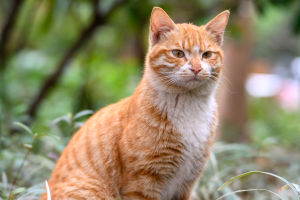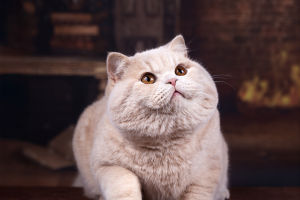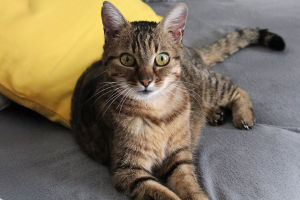You might have heard people say cats are "aloof" or "high and mighty," often comparing them unfavorably to dogs' obvious eagerness for attention. But is that really the whole story?
What if those seemingly indifferent feline behaviors are not about dislike but a sophisticated way cats communicate and manage social connections?
Let's explore how cats' "cool" demeanor is actually a carefully crafted social act shaped by evolution, environment, and personality.
Not Cold, Just Calculated: The Nature of Cat Social Behavior
Unlike dogs, cats have evolved as facultatively social animals, meaning they can live both independently and socially depending on circumstances. Research reveals that cats are not intrinsically solitary but socially flexible, often choosing when and how to engage with humans and other cats based on what feels right for them.
1. Cats regulate social distance as a strategy – approaching when the benefit (food, affection, security) outweighs risk.
2. They use subtle signals like rubbing, slow blinks, or gentle vocalizations to express trust, without overwhelming interaction.
3. Their preference for space is not coldness but a protective behavior inherited from ancestors who needed to avoid conflict.
This "aloofness" ensures cats avoid unwanted stress while maintaining strong social bonds selectively, especially with people they trust deeply.
Why Cats "Pretend" to Be Distant
The stereotype of cats ignoring you is a bit misleading. Studies on cat-human interactions show cats often initiate contact and regulate it carefully. They have been found to choose when to engage and when to withdraw, as a way of maintaining control and comfort.
1. Controlling interaction timing allows cats to feel safe and reduces social stress.
2. Cats "playing hard to get" is a normal behavior to maintain curiosity and stimulation from their environment.
3. They learn that overly demanding humans might cause stress, so responding on their own terms keeps relationships balanced.
This means that your cat's cool behavior may be its way of protecting emotional energy, not a sign of disinterest.
Understanding the Communication Behind "Cool" Behavior
Cats don't use loud or persistent cues like dogs do. Instead, they rely on nuanced body language and subtle signals to express feelings:
• The famous slow blink is a cat's "I trust you" message, an intimate gesture inviting closeness.
• A softly raised tail or gentle head rub signals friendliness without forcing interaction.
• Avoidance behaviors, like walking away or flicking the tail, indicate "I need space," not rejection.
Recognizing and respecting these signals can transform how you perceive your cat's personality, moving from labeling them "aloof" to appreciating their complex social style.
The Impact of Early Life and Socialization
Scientists agree that a cat's early experiences with humans critically shape its social tendencies. Kittens socialized to humans between two to seven weeks of age tend to be more trusting and interactive later on. Conversely, cats with minimal early contact with people often maintain a cautious demeanor, which can be mistaken for aloofness.
1. Positive early handling fosters lifelong comfort with human interaction.
2. Even well-socialized cats prefer initiating contact on their own terms.
3. Understanding individual cat personalities helps owners tailor affection and playtime effectively.
Patience and observation are key: pushing a cat for attention rarely works as well as offering invitation and respect for their boundaries.
Learning From the "Cool" Cat
The takeaway here is that cats are not just being "high and mighty" for no reason—they have a social style that values autonomy, choice, and subtle communication. Their "coolness" reflects a delicate balance of trust and self-protection, negotiated daily in their interactions with us and their environment.
Conclusion
Have you noticed your cat coming over only when it suits them? Or that slow blink that melts your heart? These are signs that your cat is choosing you carefully, on their own terms, revealing an emotional depth wrapped in mystery and subtlety.
Next time your feline friend seems distant, try changing your perspective. What if their coolness is less about being "off" and more about being a master of social diplomacy? Share your stories of unexpected cat affection or moments of shared understanding—you might inspire others to see these elegant creatures in a whole new light.


